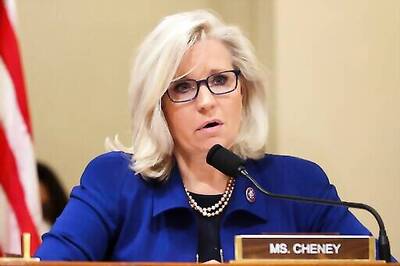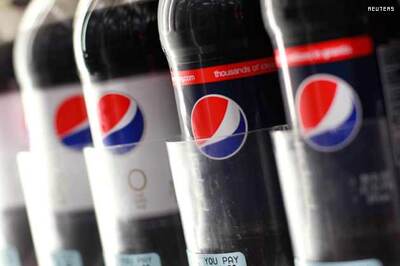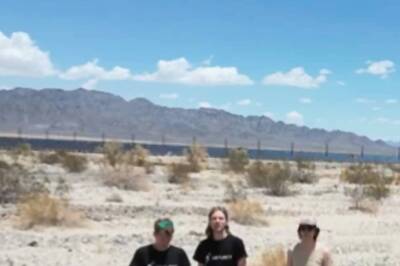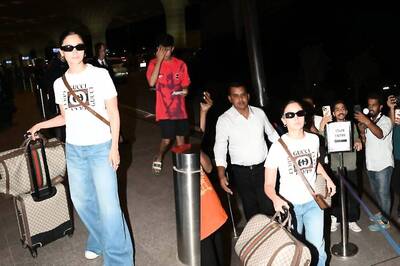
views
Dhaks and pandals – any Bengalis worth their salt can identify with these two elements that spell only one thing for the state – Pujo, or Puja for the uninitiated. However, the last few years have seen many Bengal residents march to the beat of a different drummer with a number of previously less renowned Hindu festivals growing in popularity and pomp.
Though traditionally a festive state, Durga Puja – celebrated at the time of Dussehra – and Kali Puja (that marks Diwali) – hold sway over West Bengal’s religious calendar among Hindus. Other festivals like Shiv Ratri, Jamai Shoshti, Saraswati Puja, Tarakeswar Jatra and, in the past decade, Chhath Puja, have also been popular.
However, the last five years have witnessed a surge in celebration of festivals that were previously more prevalent in other parts of the country, such as Ram Navami and the more recently concluded Ganesh Chaturthi. According to a report in the Times of India, 2019 saw 250 Ganesh Chaturthi pujas in Kolkata itself, up from last year’s 210. Not just Kolkata: places like Siliguri also recorded a similar increase with the number growing from approximately 30 to almost 180 in five years.
Though Bengalis always worshiped the deity at home or at a smaller scale, many in the city agree that there has been a dramatic rise in the number of pandals around Bengal on Ganesh Chaturthi. “It isn’t what we were used to growing up. This is a new kind of celebration,” says Kolkata-based researcher and Bhowanipore resident Syamantakshobhan Basu. He says that his neighbourhood with a traditional Bengali majority never celebrated Ganesh Chaturthi the way it did now. “There’s a distinct non-local flavour to it,” he adds. The chanting of Jai Shri Ram slogans at nearly all junctures or at the slightest provocation or without is probably one such innovation.
Another Kolkata resident Arshe Azam, 25, agrees. “There are trucks full of ‘devotees’ that roll around Prince Anwar Shah Road, chanting Jai Shri Ram, being rowdy, some even trying to incite violence,” he says. “All in the name of celebration.”
Apart from Ganesh Chaturthi, another Hindu festival that has started grabbing headlines in Bengal is Ram Navami celebration. Previously inconspicuous, this festival has picked up steam in the state and, in fact, fueled considerable violence between cadres of the ruling Trinamool Congress (TMC) and the fast-rising Bharatiya Janata Party (BJP) this year.
The BJP ruffled feathers in rival ranks around the April-May Lok Sabha polls when party state president Dilip Ghosh justified armed rallies at Ram Navami with a dismissive “if armed people can take part in Muharram rallies, why will rules be different for Ram Navami rallies?” Episodes of violence were reported from several parts of Bengal such as Burdwan and Asansol during the two-day celebrations.
However, Vishva Hindu Parishad spokesperson Sourish Mukherjee puts the blame on the state government. The VHP, a right-wing Hindu organisation, has for some years now been celebrating Ram Navami and Janmashtami with rallies and pomp in Bengal. According to Mukherjee, it was the state’s inability to control anti-social and nuisance-causing elements that led to the clashes.
As for the increase in the number of Ganesh pujas in the state, the VHP leader says it was because society in West Bengal was going through “religious awakening”. “The Hindus in Bengal are finally seeing through the appeasement tactics employed by the government for so long,” Mukherjee tells News18. He also adds that this awakening is the reason why so many new pujas are springing up. This can be seen in the fact that not just Ram Navami or Ganesh Chaturthi, but other religious occasions such as Rath and Jagadhatri Puja are also growing in strength, Mukherjee argues.
Rashtriya Swayamsevak Sangh’s Bengal secretary Jishnu Basu told News18 that there was nothing political about the increase in the number of Ganesh Chaturthi pujas this year. People of Bengal like “utsob” (festivity), points out Basu, and they are deeply religious. “It’s no surprise that Ganesh Chaturthi has caught on among Bengalis,” he says. However, Basu stresses that the RSS – the BJP’s ideological mentor – organised no such pujas or celebrations in the state.
Udayan Guha, TMC MLA from Dinhata, also notes the rise in Ganesh Chaturthi celebrations as well as other Hindu ceremonies such as weekly Shani Puja and Shiv Puja, something he had not seen before while growing up in Bengal. The legislator admits that many Trinamool Congress councillors, and he himself, attended Ganesh pujas upon request from committees in their wards this year. “As representatives of the people, we must support them in such endeavours,” Guha tells News18.
However, he clarifies that the TMC made no official donations for Ganesh Chaturthi like it does during Durga Puja and Kali Puja, and it did not undertake any grand celebrations. The former Forward Bloc leader, though, asserts that personal donations do not count.
Guha suspects that the sudden increase in pujas could be attributed to the Opposition’s attempts to mobilise support in the state. “Festivals are a matter of emotion. Some may try to use that for strategic gain.”
Nevertheless, Guha remains confident that the TMC will continue to maintain hegemony over next month’s Durga Puja celebrations.
Even as the BJP's proliferation in Bengal since 2014 acted as a catalyst, chief minister Mamata Banerjee’s TMC may indeed have a greater role to play in the introduction of new festivals and deities into Bengal’s cultural sphere. According to political and cultural commentator Jawhar Sircar, the phenomenon was just old wine in a new bottle.
To understand the significance of pujas to Trinamool Congress’s grassroots supporters, it becomes inevitable to discuss Banerjee’s own tactics in the TMC's early days to wrest power from the leftist regime that had ruled the state for over 30 years. The TMC’s focus on countering the Communist Party of India (Marxist)'s “street gangs”, Sircar explains, gave rise to Trinamool-supported local groups and puja committees. “These committees helped create the strong grassroots support base that ultimately brought Mamata to power in 2011,” the former Election Commissioner says.
Sircar points out that it was the TMC and not the BJP that started the trend of introducing more gods and goddesses to Bengal’s puja pantheon. Initially, Bengalis were happy celebrating Durga Puja and Kali Puja at a grand scale. The commemoration of deities such as Lakshmi, Saraswati, Shiv and others was common but these were not landmark events. However, Sircar says, to fully appease all local committees the TMC started to diversify in terms of deities. Satisfying all the groups in a “para” (neighbourhood level) was only possible by encouraging one to do Durga Puja while another could do Karthik Puja and a third could perform Shitola Puja, he maintains.
This “trend” of “puja-namaz”, as Sircar puts it, is exactly what the BJP appears to have hijacked. “They seem to be beating Mamata at her own game,” he surmises.
Not everyone in Bengal’s capital holds a dim view of the growing influence of newer, “north-Indian” festivals. Kolkata-based actor Kartikey Tripathi says festivals are fine as long as there is no bloodshed. “I am okay with anything but only till the time there’s no violence, killing or lynching in the name of any god,” he says.
Political consultant Alimpan Banerjee, 28, is more practical. “The bigger festivals are controlled and monitored by the ruling party. So the challenger has very little operating room to capture the public narrative through them,” he tells News18.
This, he adds, inevitably led to a mushrooming of hitherto low-key festivals being used as a platform to assert the ascendancy of the Opposition.


















Comments
0 comment